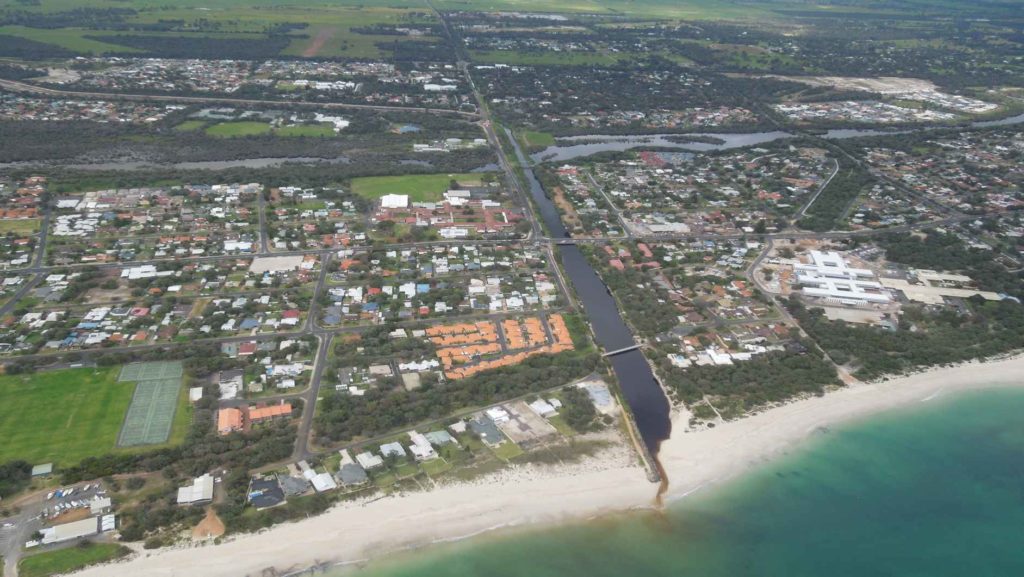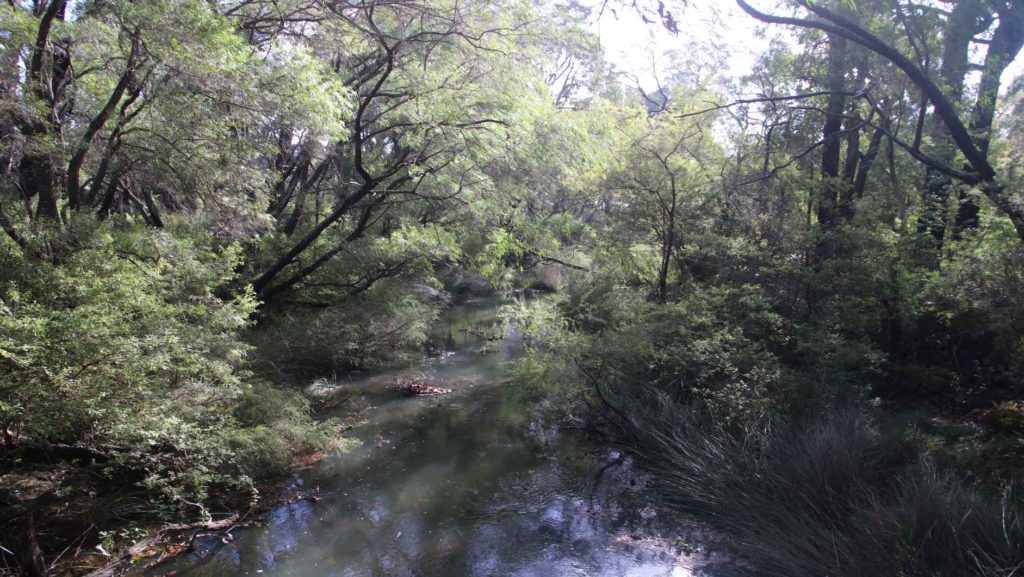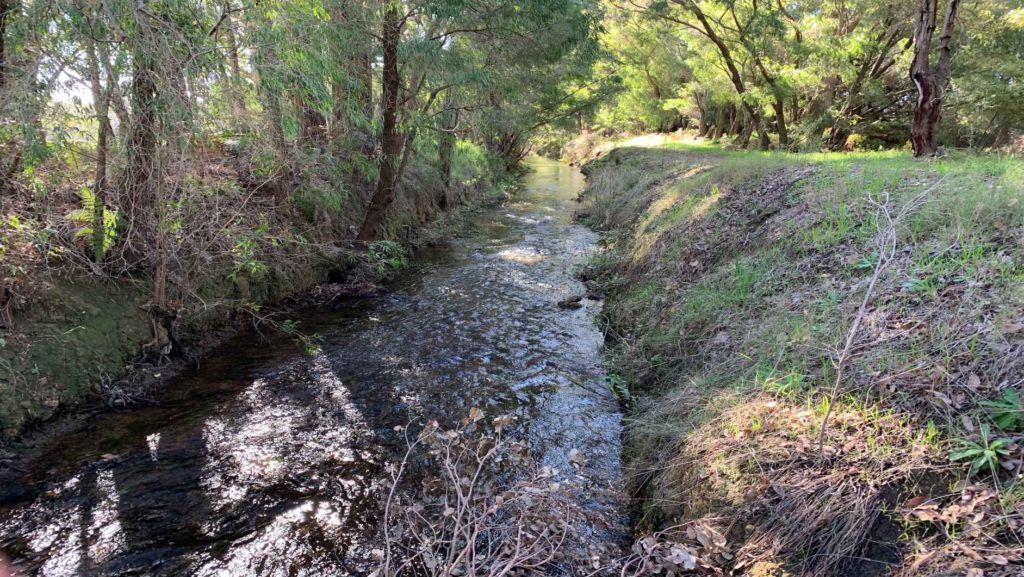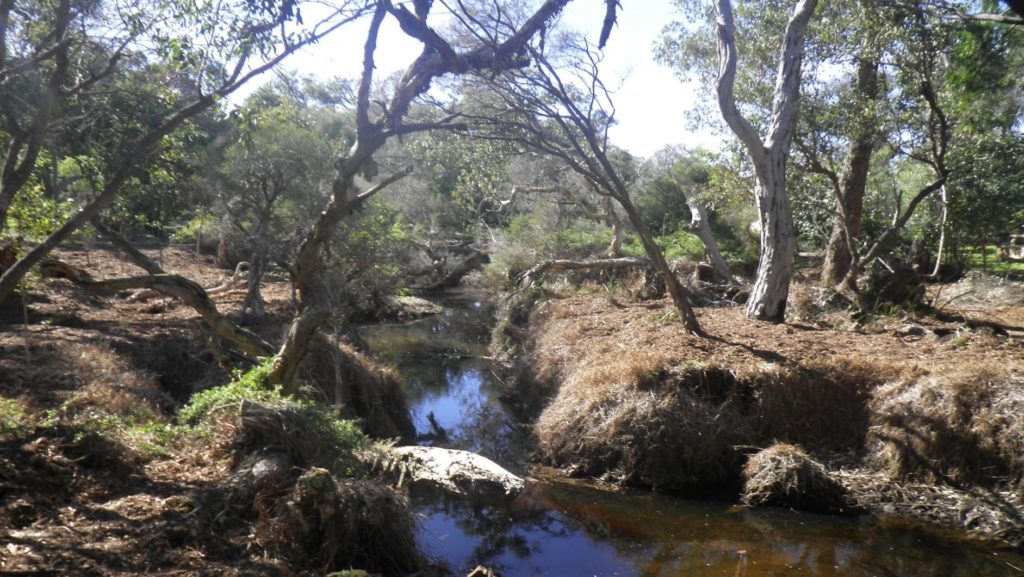From Dunsborough to Geographe, urban gardeners have been taking part in a new initiative to create nature verge gardens, transforming their streetscapes with colour and life whilst providing habitat for local wildlife.
Even with cooler autumn weather on the way, the warm dry Noongar season of Bunuru is still lingering, making the task of keeping lawns healthy and green challenging. Many gardeners are considering downsizing their lawn area to reduce the effort, cost, and water use needed to keep it looking good.
One of the easiest areas to replace lawn is on the urban road verge as it is well suited to low-growing native plants and street trees. The Bay OK verge project has been showing residents how to plant their verges with native plants that will thrive and beautify their gardens with a lot less water. The project covers how to amend sandy soil with additives such as clay and compost, build soil health, and select native plant species appropriate for the verge and sun exposure.
Many verges across the South West are irrigated lawn areas that require significant maintenance, large amounts of water and fertiliser. In a drying climate, it is important now more than ever to identify ways in which water use can be reduced, and replace large lawn areas with mulch and native plant species. Fertilisers used on lawns can also impact our environment, with nutrients running off into storm water drains and ending up in our rivers, wetlands, and Geographe Bay.
So far, eighteen homeowners have been offered advice and mentoring to remove turf and amend their soil. Using the proven Bay OK gardening techniques, each resident received on-site coaching in Bay OK gardening and were shown how to create a nature verge garden, including assistance with species selection and layout. Planting is planned for mid-Autumn when the hot weather has eased and rain is on the way to help the plants establish. Participants will be supplied with tube stock from the Geographe Community Landcare Nursery to start their native gardens.
Linda Denford is one of the project participants and is in the initial planning stages. “We have been designing a native plant garden for our new house in Busselton but were unsure of the best way to proceed, dealing with coastal sand and really poor soil. We are committed to the Bay OK gardening principles, and the information the GeoCatch has shared with us has been invaluable,” said Linda.
Other participants have joined the program to provide habitat for native wildlife. Bindi Evans is a local resident planning to create an urban wildlife corridor. “I’m interested in planting a waterwise and wildlife-friendly verge as I have a lot of native animals visiting. Mainly birds, skinks, and my resident possum family. I find keeping on top of my weeds takes most of my time, so I will try the beautiful native verge approach. I think it will really ‘pop’ and hopefully inspire others,” said Bindi.
Lisa Massey, from GeoCatch who facilitates the Bay Ok verge project, recognises that most people are motivated to improve their garden, but don’t always know where to start. “Most of the participants have joined the program because they want to attract more birds and wildlife to their gardens. A native verge garden is a key component in increasing the habitat diversity on their property. Many native species are great grass substitutes that require much less water, and we can show you how to get started” said Bay OK project officer Lisa.
The Bay OK project regularly holds workshops to promote actions that protect Geographe Bay and the waterways and tributaries that flow into it. More information on Bay OK gardening and event announcements can be found at www.geocatch.asn.au. Installing verge plantings of any type, except for lawn, must be assessed by the City of Busselton to ensure designs are safe and do not interfere with pedestrians or motorists.
The Nature Verge project is supported by funding from the Western Australian Government’s State NRM Program, provided through the City of Busselton. The Bay OK project is supported by funding from the Australian Government’s National Landcare Program, in partnership with South West Catchments Council. This project is also part of Healthy Estuaries WA and Revitalising Geographe Waterways. These State Government initiatives aim to support the long-term health of our south-west waterways.





















